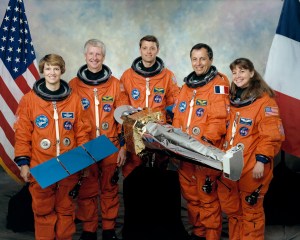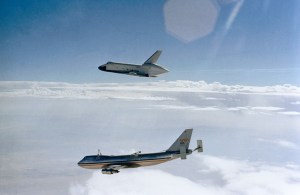The launch of Sputnik, the world’s first artificial satellite, by the Soviet Union in October 1957, and the implied Soviet superiority in missile technology, galvanized the United States. Congress began hearings in November to develop a long-term space plan. In April 1958, President Dwight D. Eisenhower asked Congress to pass legislation to create a civilian space agency to oversee the nation’s space activities. Bipartisan agreement between a Republican President and a Democrat-controlled Congress led to the drafting of legislation to create a civilian agency to oversee America’s non-military space activities. President Eisenhower signed the National Aeronautics and Space Act of 1958 into law on July 29, creating NASA. The agency opened for business on Oct. 1, 1958.

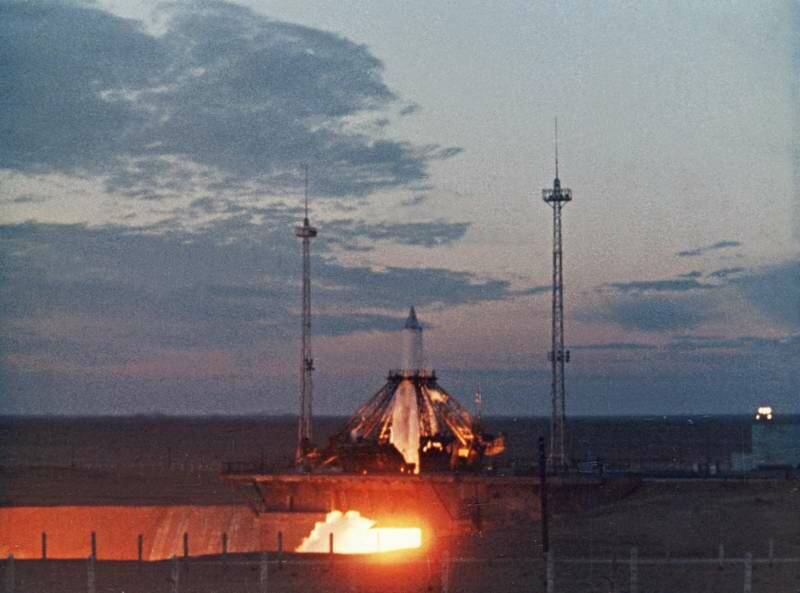
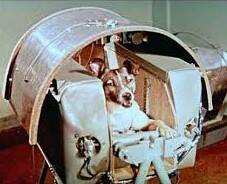
Left: Official emblem of the International Geophysical Year. Middle: Launch of Sputnik, the world’s first artificial satellite. Right: Laika, the first animal in orbit aboard Sputnik 2, during preflight training.
In July 1955, both the United States and the Soviet Union pledged to orbit an artificial scientific satellite as part of the International Geophysical Year (IGY), a multinational scientific endeavor to study the Earth and its environment planned to run from July 1, 1957, to Dec. 31, 1958. The two countries approached their pledges very differently. The Soviet Union operated in secrecy, formally approving a single program on Jan. 30, 1956. Preferring a civilian-led effort, the Eisenhower Administration gave priority to the Vanguard project for its IGY satellite while the military services continued their independent projects. With American plans and progress public, the secretive Soviets had an edge in upstaging U.S. efforts. Sergei P. Korolev, the chief designer of the Soviet Union’s early space program whose identity the Soviets kept secret until after his death in 1966, envisioned a large scientific satellite code named Object D as his country’s contribution to the IGY. When the project ran behind schedule, the Soviet government directed him to launch a much simpler satellite to beat the Americans into space. On Oct. 4, 1957, following a crash program to develop the simple satellite and several test flights of its R-7 booster rocket, the Soviet Union announced that it had placed Sputnik into orbit around the Earth. Although it carried no scientific instruments, the 184-pound Sputnik had a large impact on the United States’ space program. Buoyed by the success of Sputnik, and its political impact, the Soviet government directed Korolev to develop a second satellite, this one carrying a living animal. On Nov. 3, the Soviets launched the 1,120-pound Sputnik 2, carrying a dog named Laika.
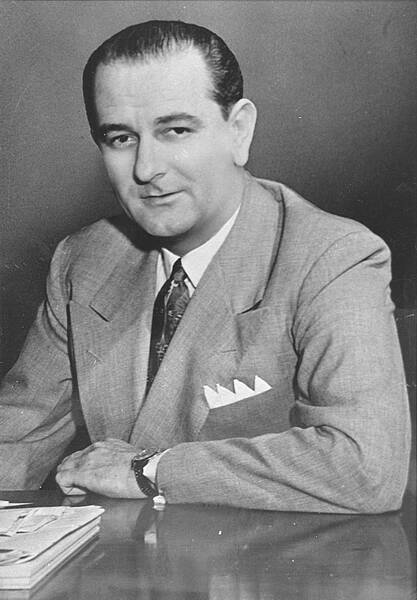
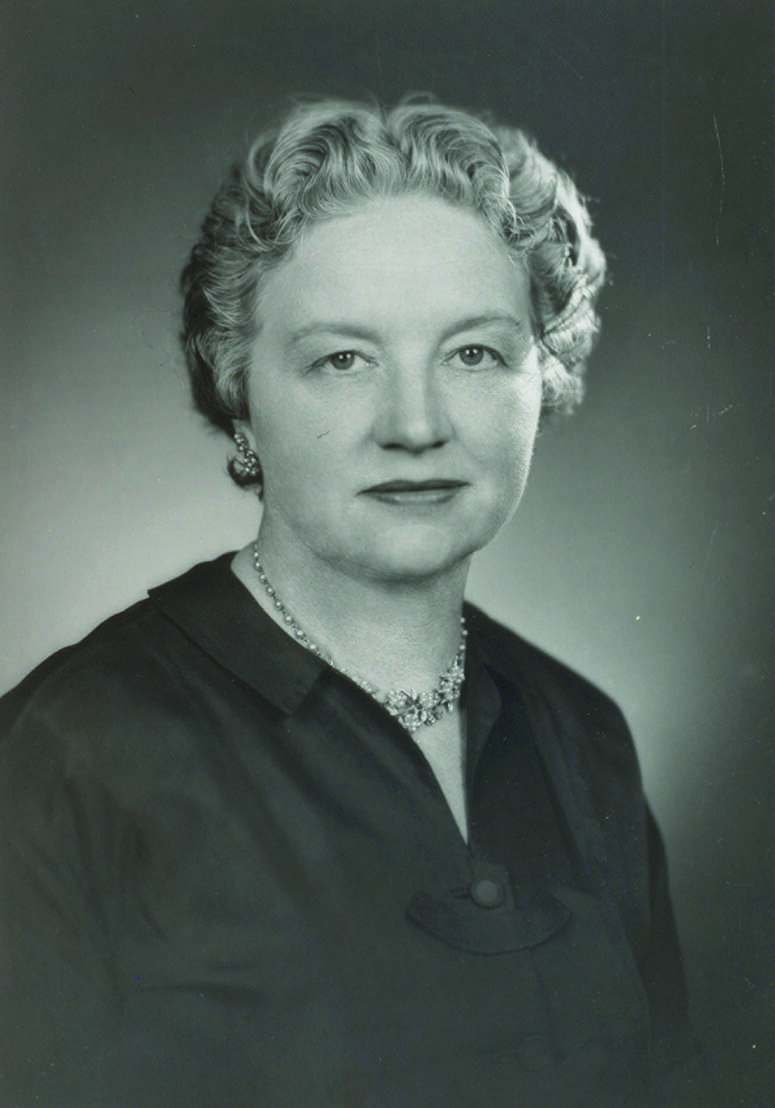
Left: Senator Lyndon B. Johnson, Democrat from Texas. Right: Legislative Reference Service analyst Eilene Galloway.
On Nov. 21, Eisenhower established the President’s Scientific Advisory Committee (PSAC), charged with advising him on a response to the Soviet launches. The committee’s report in February 1958 recommended the establishment of a new civilian space agency built around the existing National Advisory Committee for Aeronautics (NACA), established in 1915, to promote peaceful research in space. On Nov. 25, the Preparedness Investigating Subcommittee of the Senate Armed Services Committee, chaired by Senate Majority Leader Lyndon B. Johnson – a Democrat from Texas – began six weeks of hearings on the perceived “missile gap” between the two superpowers. By the time the hearings ended in January 1958, 73 expert witnesses including scientists and engineers provided more than 1,300 pages of testimony, and changed Johnson’s view of space as a battlefield to one with scientific and commercial potential. He could also foresee that space could be used to benefit rural and agricultural communities like those in his home state. Legislative Reference Service analyst Eilene Galloway summarized the results of the hearings: “We changed the perception of the problem from one that was originally only national defense to one that also had beneficial uses from space and meant that we could hope for peace.”
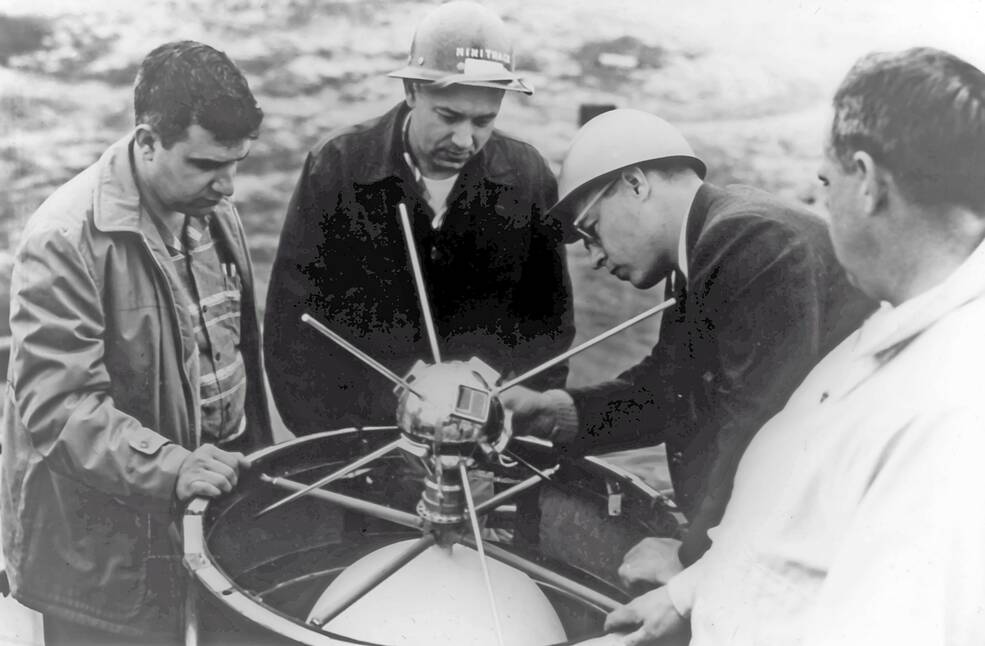
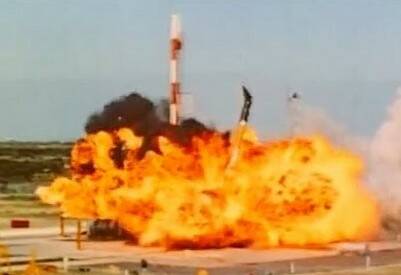
Left: Technicians install a Vanguard satellite into the top of its rocket before launch. Right: The explosion of the Vanguard TV3 seconds after liftoff.
The American Vanguard project, led by the National Academy of Sciences, used a three-stage rocket developed by the Naval Research Laboratory to place a 3-pound scientific satellite into orbit. Following the Sputnik launches, the United States accelerated the Vanguard project and readied a test vehicle for launch on Dec. 6, 1957. Unlike the Soviet launches that took place in secrecy, the American launch took place in front of the world press. The Vanguard Test Vehicle 3 (TV3) rose about 4 feet into the air, but the main engine lost thrust and the rocket fell back onto the pad, exploding in a huge fireball. The force of the explosion threw the tiny satellite clear, and engineers recovered it, slightly battered by the experience. The very public nature of the failure fueled the urgency of the situation and lent support to the need for a single agency to manage the American civilian space effort.
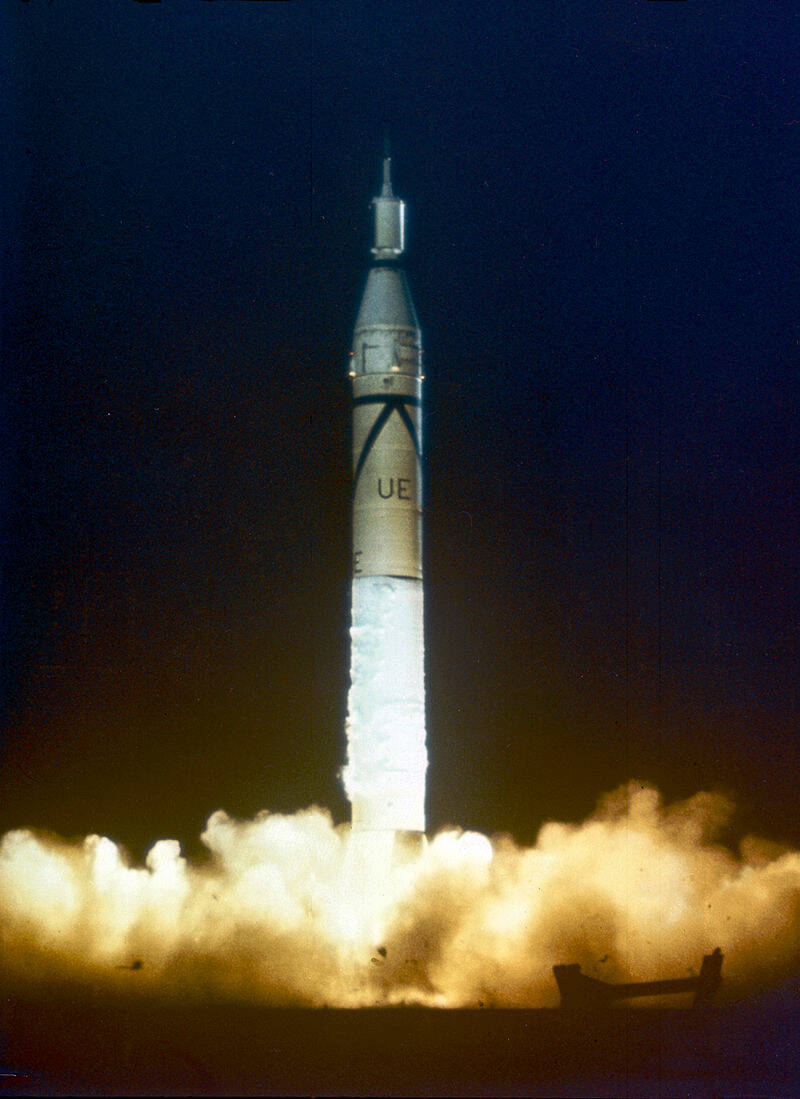
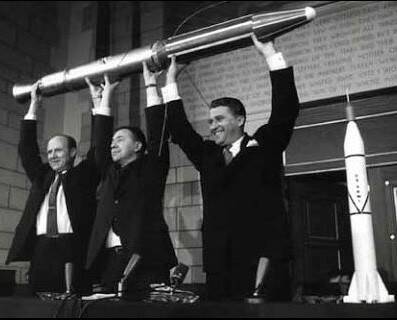
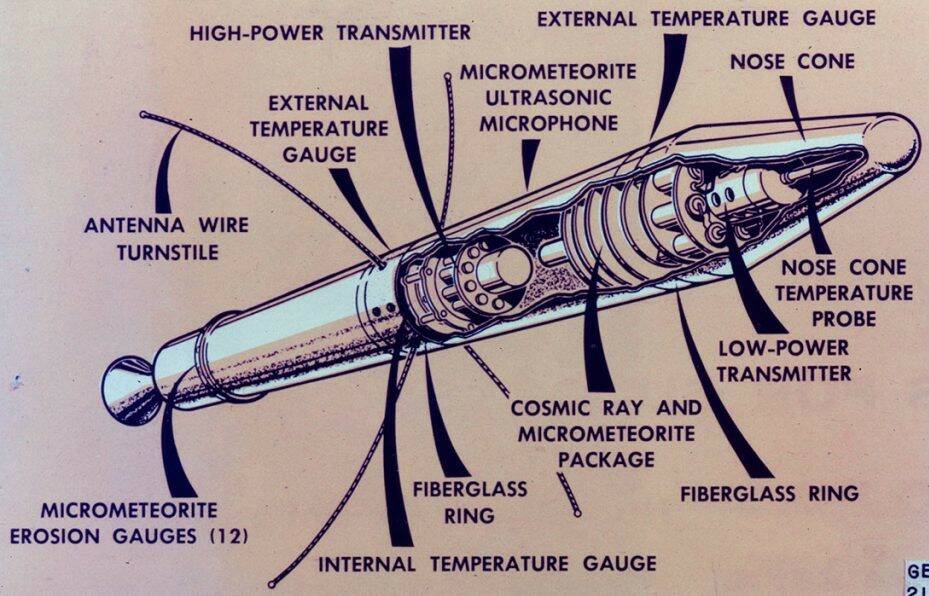
Left: Launch of Explorer 1 on a Juno rocket. Middle: Director of the Jet Propulsion Laboratory William H. Pickering, left, James A. Van Allen and Wernher von Braun at a Washington, D.C., news conference holding a model of Explorer 1 after its successful launch. Right: Schematic of Explorer 1 showing its science instruments.
Following the Vanguard failure, the United States resurrected the Army Ballistic Missile Agency’s (ABMA) Jupiter-C rocket program, developed by Wernher von Braun’s team. The California Institute of Technology’s Jet Propulsion Laboratory (JPL) designed and built the Explorer satellite. The ABMA and JPL completed the job of modifying the Jupiter-C to the Juno rocket and building Explorer 1 in 84 days. The Juno rocket traced its ancestry back to the German V-2 rocket, which von Braun had also designed. Working in the U.S. after World War II, he used the V-2 to develop the Redstone intermediate range ballistic missile, from which he developed the Jupiter-C as a high-performance three-stage rocket. The addition of a fourth stage created the Juno rocket, capable of launching a satellite into orbit. Explorer 1, weighing 30 pounds, including 18 pounds of scientific instruments, successfully launched from Cape Canaveral’s Pad 26 on Jan. 31, 1958. A team of women mathematicians at JPL computed Explorer’s trajectory and confirmed that it had reached orbit around the Earth, although it achieved a somewhat higher orbit than planned.
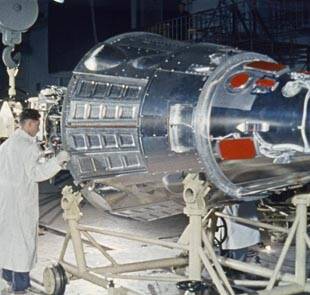
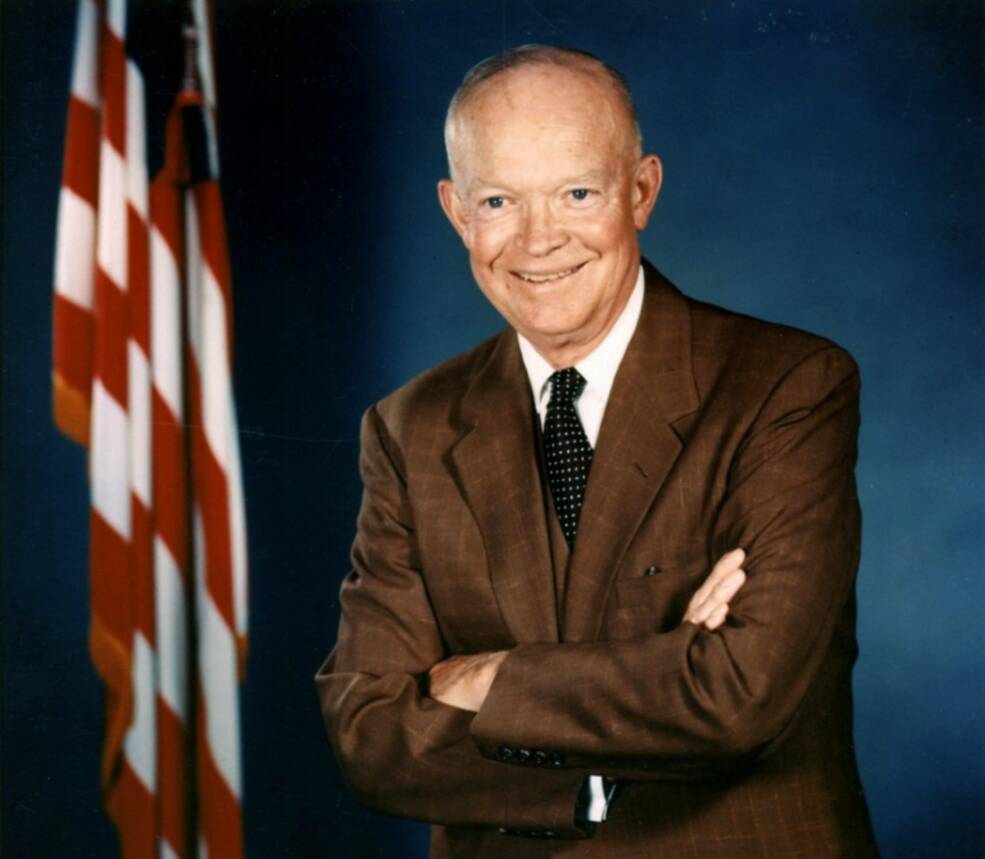
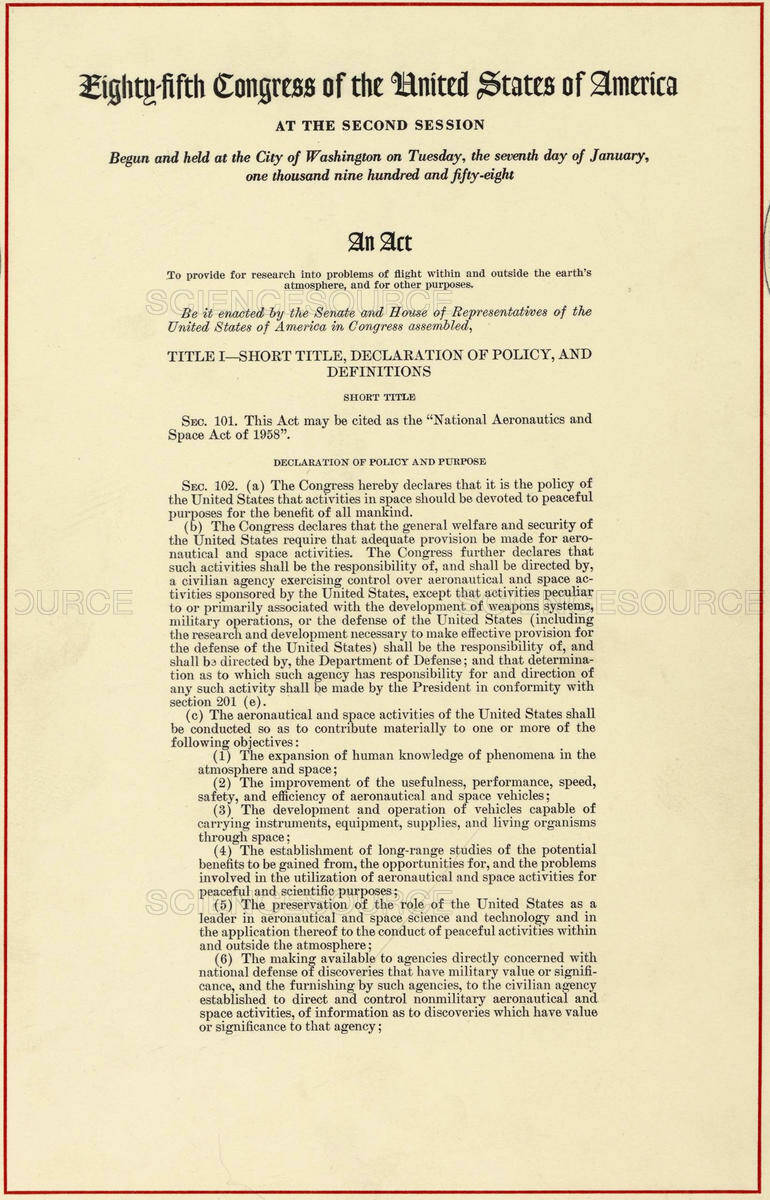
Left: A technician prepares Sputnik 3 for flight. Middle: Portrait of President Dwight D. Eisenhower. Right: The National Aeronautics and Space Act of 1958.
On April 2, 1958, in a letter to Congress President Eisenhower called for the creation of a civilian National Aeronautics and Space Agency (NASA), based on the existing NACA, to oversee the U.S. space program. Although a former military commander, Eisenhower believed a civilian agency would be more effective than assigning space to the military, where inter-service rivalries had already demonstrated a lack of results in launching a satellite. As Congress drafted the legislation, Galloway successfully lobbied to designate the new organization an administration instead of an agency to give it broader authority to coordinate with other government entities. Twelve days later both the Senate and the House introduced versions of the NASA bill, with hearings starting the next day. The Soviet launch in May of the nearly 3,000-pound Sputnik 3 (Korolev’s original Object-D scientific satellite) provided strong incentive for the bills’ approvals. The House bill passed on June 2 and the Senate version on June 16. Sen. Johnson chaired a bipartisan panel to produce a joint version of the billand met with the President following the July 4th holiday to resolve any remaining issues. Congress passed the final version of the bill, the National Aeronautics and Space Act of 1958, on July 16 and President Eisenhower signed it into law July 29.
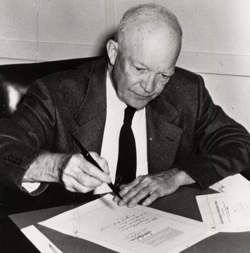
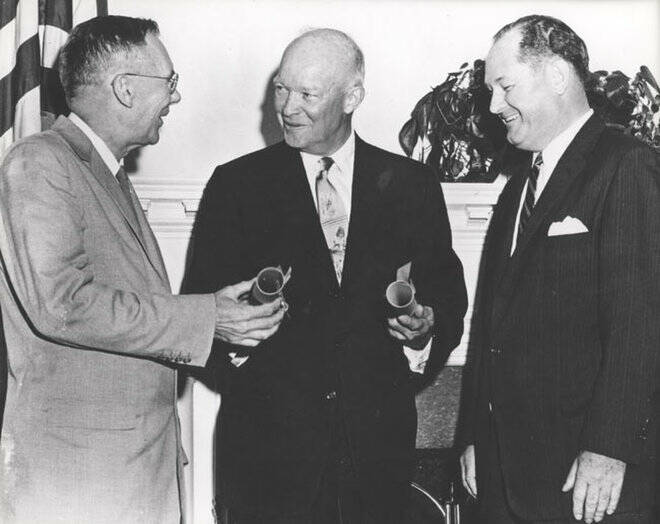

Left: President Dwight D. Eisenhower signs the National Aeronautics and Space Act of 1958. Middle: President Eisenhower, center, chats with NASA Deputy Administrator Hugh L.Dryden, left, and NASA Administrator T. Keith Glennan, right, following their swearing in. Right: The Dolley Madison House today, the first location of NASA Headquarters in Washington, D.C.
On Aug. 8, President Eisenhower nominated T. Keith Glennan, president of Case Institute of Technology in Cleveland, Ohio, and Hugh L. Dryden, director of NACA, to be administrator and deputy administrator, respectively. The Senate confirmed them a week later and they were sworn in at the White House on Aug. 19. NASA officially opened for business Oct. 1, 1958, with its Headquarters at first occupying temporary office space at the Dolley Madison House in Washington, D.C.


























